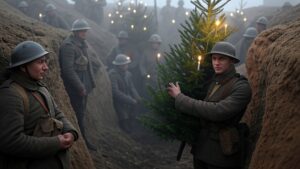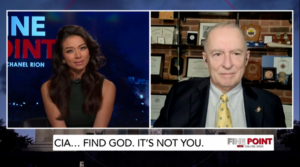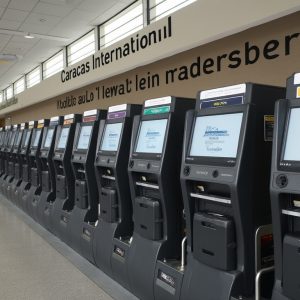THREE COURAGE EXEMPLARS
“Yet there was something else about the man [in the water] that kept our thoughts on him, and, which keeps our thoughts on him still. He was there, in the essential classic circumstance. Man in nature. The man in the water. For its part, nature cared nothing about the five passengers. Our man, on the other hand, cared totally. So the timeless battle commenced in the Potomac. For as long as that man could last, they went at each other, nature and man; the one making no distinctions of good and evil, acting on no principles, offering no lifelines, the other acting wholly on distinctions, principles and, one supposes, on faith.”
Roger Rosenblatt
“The Uniqueness of Man”[1]
“Authorities moved fast when a daring lone demonstrator disguised as a construction worker draped two white banners over a busy Beijing overpass in October [2022], their message calling for the ouster of Chinese leader Xi Jinping just days before he would secure a historic third term.”
Lily Kuo, et.al.[2]
“In the early 1960’s, the U.S. CIA sought out the Hmong and recruited them to fight a ‘secret war’ against the North Vietnamese communists and the Pathet Lao … After the War in 1975, the Hmong were singled out by the victorious communist governments of Laos and Vietnam. They were hunted down, taken to concentration camps, and persecuted… It is estimated that more than 10% (35,000) of the entire Hmong population in Laos died as a result of their involvement with the U.S. during the Vietnam War … an additional 20,000 Hmong died after 1975 because of persecution, starvation, chemical spray, drowning, and simply killed by the Pathet Lao.”
Hmong American Center[3]
As Ima and I crisscrossed this country during her post-retirement tour, I have grown to look for two things: words of honor and personal acts of valor.
As to words of honor—by which I mean the highest voluntary expression of personal respect from a human being to God, or to another human being—I found fragments everywhere on our trip: loving gestures between husband and wife, children to parents, family interactions, or special memories exchanged between old friends. One of the true tragedies of our contemporary culture is that we hear so few honoring words spoken.
I have found, over the years, that such honoring words are the surest indicators of vibrant relationships.
The second thing I am always on the lookout for are deeds of personal valor and acts of courage. With that in mind, I’d like to write about three courageous acts in the face of seemingly insurmountable odds. All three of these “exemplars” came to my attention during our travels over the past few days.
The first showed up on my perceptual radar screen as Ima and I visited the beautiful mountain-top home of Jeff Davis, one of my former students. Jeff and Kayla live high atop Beech Mountain, North Carolina and they share an office in the picturesque village of Banner Elk at the base of the mountain. Jeff is a successful investor and fund-manager; Kayla is a gifted accountant. At one point in his life after school, Jeff lived with us in Herndon, Virginia, where he worked in the first Bush White House. Jeff’s dad—whom I’ve mentioned before in my missives—was the former and highly successful president of both the College of the Ozarks and Alice Lloyd College; it has been my privilege to work for him at both campuses.
At any rate, while we were sitting in Jeff’s living room he pulled out an old notebook. He had kept the notes from the “senior seminar” class I taught while I was the director of the June Buchanan School, co-located on the campus of Alice Lloyd College, in tiny Pippa Passes, Kentucky. Jeff has kept those notes intact well over thirty-five years. He even showed me a test where (in a “matching” section) I asked each of the five other students—Matt, Kenny, Arnie, Angie and Jamie—to match their favorite songs to each other, based on our class discussions.
I used to do crazy things like that in class!
Jeff’s notebook also contained several of my class handouts. Each of those handouts, in turn, were generated on my old Apple Macintosh 128K computer (the same model is now in the Smithsonian Museum). I used that computer—with information saved on hard discs—to generate all the documents and handbooks for the school. Subsequently, I used the same computer for the class notes put together by Bruce McGary and I during the Chase Law School years. The old Mac holds a special place in my heart.
One handout that was folded in Jeff’s class notebook garnered my special attention. I have remembered both the article and the event it commemorated over all these years. In January 1982, as one of the many bridges crossing the Potomac River was slammed with rush hour bumper-to-bumper traffic, a blue-and-green Air Florida plane approaching Washington National Airport clipped the bridge. Flight 90 went down in the frozen river waters.
As the nation watched on television, rescue helicopters swooped over the river trying to save survivors. A handful of heroes were made that day.
But one man stands out above the rest. He was balding, probably in his 50s, sported a large, “extravagant” moustache and remained unidentified. According to Rosenblatt’s account, he was the person “most responsible for the emotional impact of the disaster.” He became known simply as “the man in the water.” He was first seen clinging to the tail section of the plane with five other survivors. Each time the helicopter lowered a lifeline and flotation ring, he passed it to another passenger. As the article notes:
“For at some moment in the water he must have realized that he would not live if he continued to hand over the rope and ring to others. He had to know it, no matter how gradual the effect of the cold. In his judgement he had no choice. When the helicopter took off with what was to be the last survivor, he watched everything in the world move away from him, and he deliberately let it happen.”[4]
He probably didn’t intend to be a hero when the plane took off.
He rose above the adverse circumstances.
The man’s bravery and self-sacrifice riveted the attention of a nation.
For me, it still does, even after all these years.
My second exemplar of true courage also involves a bridge. It took place a little over a month ago. In Beijing, deep in the heart of President Xi Jinping’s Communist China, a lone individual instigated a rare public protest. On October 13, 2022, garbed in a construction worker’s orange vest and yellow helmet, an unnamed protestor draped two white banners and burned tires over the busy Sitong Bridge overpass in Beijing’s Haidian District. He then chanted repeatedly through a loudspeaker: “Go on strike at school and work, remove dictator and national traitor Xi Jinping! We want to eat, we want freedom, we want to vote!”[5]
The protestor was immediately arrested. News is hard to get in China. A 48-year-old scientist named Peng Lifa was arrested by authorities, with all his tweets and on-line messages immediately taken down.[6]
But the damage was done. Even as the Chinese party elites gathered in the nearby Great Hall of the People to extol President Xi and rubber-stamp his policies and unprecedented third term at the 20th Party Congress, anti-Xi slogans echoing the Sitong Bridge banners began popping up in a number of Chinese cities.[7] Around the world, copycat demonstrations spread to over 350 campuses, many by Chinese ethnic students.[8] The protestor became known around the world as the “Bridge Man”—an echo back to the “Tank Man”—another nameless Chinese protestor of a different era who faced down a column of Chinese tanks leaving Tiananmen Square a day after the 1989 massacre.[9]
I still remember sitting in front of the television in my living room in Erlander, Kentucky (I was in law school then), mesmerized by the picture of the lone Chinese protestor facing down a line of tanks. The scene became one of the iconic images for my generation.
Back to the bridge. In the hours and days after the one-man protest, Chinese authorities furiously cracked down on any on-line mention of the incident: social media posts with the words “bridge” or “Beijing” vanished within hours, related tweets were taken down, and further pressure was brought to bear on informal jieli (“pass the baton”) collective on-line protests.[10]
No doubt, the “Bridge Man” is being interrogated as we speak.
The silence on his behalf in the rest of the world is deafening.
He knew the consequences of his decision (probably for him and his family).
That’s the way things work in authoritarian regimes.
Nor did his one-man protest initiate the type of chain-reaction crowd “boo” moment that toppled the 42-year-old Romanian Communist regime of Nicholae Ceausescu in late 1989. (Here I am referring to the Romanian dictator’s address to some 100,000 people in the city of Timisora to condemn a local revolt—the Party tried to pack the crowd, but about two minutes into the speech there was a single boo, joined then by a chorus of others, then jeers, then insults—the startled expression on Ceausescu’s face as the crowd refused to be silent remains one of the defining moments of 1989, and the revolutions that swept Communist regimes from Eastern Europe.)[11]
But then again, we don’t teach history anymore.
If that was the intent of the man on the bridge, it didn’t work.
“Sigh.”
My third exemplar of courage emerged from several conversations at the home of Xeng and Xi Ly. They now live outside of Charlotte, North Carolina, but for two decades were our neighbors in Sterling, Virginia.
And no one could ask for better neighbors.
Xeng and Xi are Hmong. They are two of an estimated 330,000 ethnic Hmong in the U.S. today. They both overcame the obstacles of learning English, have assimilated into the culture, are proud wage earners, and became legal citizens (just saying).
None of that was easy.
What sets them apart are their life stories: amazing examples of danger-filled flights from persecution, the powerful allure of freedom, and the mercy of God. Although the personal journeys of Xeng and Xi are powerful individual exemplars of courage in their own right, there is also a compelling back story: a “secret war” from 1971-1975, where American intelligence agencies covertly recruited Hmong tribesmen to fight in the jungles of Laos, Cambodia and Vietnam;[12] a secret war that largely went unreported by mainstream U.S. media outlets; a secret aerial bombing campaign[13] where more bombs were dropped on Laos than the number dropped on all countries combined in World War II;[14] and, a secret embarrassment where we completely abandoned our Hmong allies and left them to their fate.
Against this backdrop are the stories of Xeng and Xi.
Xeng had worked for USAID and had received American assistance for his medical training. It made him a marked man. The immediate problem was getting across the Mekong River: he could not swim (eventually he bought his way aboard a boat). “I cannot explain how horrible it was,” Xeng told me, “to stay in Laos was a certainty of death, either today or tomorrow, but if you could survive the river crossing you had a chance to survive. Many used bamboo for floats, soldiers were on the banks and shooting, and—in the rapids below—others set out nets to snare the bodies and steal money out of the clothing.”
Xi’s escape was even more amazing. She was a very young girl at the time. She attempted to escape with her grandmother— “she had the money but I could speak the language”—but was captured and returned to her village. Eventually (after several close calls) they found a relative and a boat across the river. In Thailand they were by themselves in “a grassy field” before finding a place in a Thai resettlement camp. A nephew cleared off land to help them pay for scarce food supplies. The conditions in the camp were very poor and life in the camp was very difficult and hazardous. Xi told us about a young wife who was raped in front of her husband, “but they could say or do nothing.”
She first met Xeng there (he was helping provide medical care at the camp). “Who is that pretty young girl?” Xeng asked a relative. Their paths would cross again across the ocean, in the United States. Xi was in Philadelphia, struggling to learn English and make her way through school. She fondly remembers an American couple who patiently worked with her. On a class trip to Washington D.C. (for the Bicentennial) she “ran into” Xeng again (he knew she would be coming). Eventually they were married, before she finished school.
Xeng would rather talk about his father. He was a remarkable individual, who was a Hmong tribal leader of sorts, and at first refused to leave his tribe and his relatives in the jungle. According to Xeng, his father had a special “gift” of sorts and could predict things in advance. His father would eventually testify on Capitol Hill during the “yellow rain” hearings,[15] and he remained convinced to his dying day that his fellow tribesmen were victims of chemical agents.
Xeng still believes it too.
The personal stories of Xeng and Xi held us spellbound for the entire time of our short stay with them. They were such gracious hosts. Xi confidentially confided many other things that happened in private talks with Imogene.
This account, of course, barely touches the extent of their incredible experiences.
Ima and I treasure Xeng and Xi’s friendship and will always be amazed by their acts of courage.
And their love for their adopted country.
[1] Roger Rosenblatt, “The Uniqueness of Man,” Time Magazine, Jan. 1982. One of my former JBS students (Jeff Davis) let me borrow my printed version of this article—still one of my personal favorites after all these years—during Ima and my visit to his and Kayla’s beautiful home on the top of Beech Mountain NC in Oct. 2022.
[2] Lily Kuo, Vic Chiang, and Theodora Yu, “One man’s bold protest against China’s leaders inspires global copycats,” The Washington Post, Nov. 10, 2022.
[3] “What were the Hmong’s Roles in the Vietnam War,” Hmong American Center (blog), Oct. 4, 2018.
[4] Rosenblatt, “The Uniqueness of Man.”
[5] “China congress: How one man on a bridge marred Xi Jinping’s big moment,” BBC, Oct. 21, 202;see also “Rare protest criticizes China’s president days before Communist Party congress,” NBC News, Oct. 13, 2022; Martin Pollard and Eduardo Baptista, “Rare political protest banners removed in Chinese capital,” Reuters, Oct. 14, 2022.
[6] Kuo, “One man’s bold protest”; Jenny Pan, “Chinese police arrest bridge protestor calling for citizens to ‘take down dictator Xi Jinping,” The Telegraph, Oct. 13, 2022.
[7] “Anti-Xi protest spreads in China and worldwide as Chinese leader begins third term,” CNN, Oct. 23, 2022.
[8] Kuo, “One man’s protest.”
[9] Ibid.
[10] Kuo, “One man’s protest”; see also: “’We all saw it’: anti-Xi Jinping protest electrifies Chinese internet,” The Guardian, Oct. 14, 2022; Yvette Tan, “China protest: Mystery Beijing demonstrator sparks on-line hunt and tributes,” BBC News, Oct. 14, 2022; Dake Kang, “China quashes social media about protest banners in Beijing,” Associated Press, Oct. 13, 2022; Daisuke Wakabayashi and Claire Fu, “China’s Internet Censors Race to Quell Beijing Protest Chatter,” The New York Times, Oct. 14, 2022.
[11] For those interested, see—among many others—Victor Sebetsyen, Revolution 1989: The Fall of the Soviet Empire, Pantheon Books, NY: 2009.
[12] A sampling of the literature: Kenneth Conboy and James Morrison, Shadow War: The CIA’s Secret War in Laos, Paladin Press, 1995; Timothy Castle, At War in the Shadow of Vietnam: U.S. Military Aid to the Royal Lao Government, 1955-1975, Columbia University Press, 1993; Roger Warner, Backfire: The CIA’s War in Laos and Its Link to the War in Vietnam, Simon & Schuster, 1995.
[13] See, Christopher Robbins, The Ravens: The Men Who Flew in America’s Secret War in Laos, Crown, 1987.
[14] See, Pa Nhia Xiong, “The Secret War: The Forgotten Hmong Heroes,” (unpublished dissertation), California State University, Fresno, 2020.
[15] The “yellow rain” controversy is a fascinating topic. In the early 1980s, U.S. officials accused the then-U.S.S.R. of supplying T-2 mycotoxins to the Communist regimes in Vietnam and Laos which were, in turn, used against dissident groups in their own countries. Hmong refugees and others described sticky yellow substances dropped from helicopters that caused blisters, sores and skin infections—the so-called “yellow rain.” A UN investigation was inconclusive, and some scientists subsequently theorized that mass defecations of large bee swarms were the source of the substance. Many US documents relating to the controversy remain classified. The U.S. government has never retracted its allegations.




